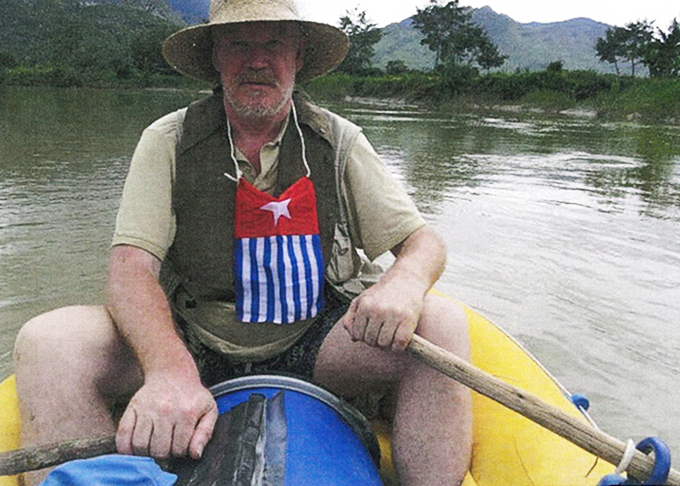
BOOK REVIEW: By David Robie
Two damning and contrasting books about Indonesian colonialism in the Pacific, both by activist participants in Europe and New Zealand, have recently been published. Overall, they are excellent exposes of the harsh repression of the Melanesian people of West Papua and a world that has largely closed a blind eye to to human rights violations.
In Papua Blood, Danish photographer Peter Bang provides a deeply personal account of his more than three decades of experience in West Papua that is a testament to the resilience and patience of the people in the face of “slow genocide” with an estimated 500,000 Papuans dying over the past half century.
With See No Evil, Maire Leadbeater, peace movement advocate and spokesperson of West Papua Action Auckland, offers a meticulously researched historical account of New Zealand’s originally supportive stance for the independence aspirations of the Papuan people while still a Dutch colony and then its unprincipled slide into betrayal amid Cold War realpolitik.
 Peter Bang’s book features 188 examples of his evocative imagery, providing colourful insights into changing lifestyles in West Papua, ranging through pristine rainforest, waterfalls, villages and urban cityscapes to dramatic scenes of resistance to oppression and the defiant displays of the Morning Star flag of independence.
Peter Bang’s book features 188 examples of his evocative imagery, providing colourful insights into changing lifestyles in West Papua, ranging through pristine rainforest, waterfalls, villages and urban cityscapes to dramatic scenes of resistance to oppression and the defiant displays of the Morning Star flag of independence.
Some of the most poignant images are photographs of use of the traditional koteka (penis gourds) and traditional attire, which are under threat in some parts of West Papua, and customary life in remote parts of the Highlands and the tree houses of the coastal marshlands.
Besides the photographs, Bang also has a narrative about the various episodes of his life in West Papua.
Never far from his account, are the reflections of life under Indonesian colonialism, and extreme racism displayed towards the Papuan people and their culture and traditions. From the beginning in 1963 when Indonesia under Sukarno wrested control of West Papua from the Dutch with United Nations approval six years later under a sham “Act of Free Choice” against the local people’s wishes, followed by the so-called ‘Transmigrassi’ programme encouraging thousands of Javanese migrants to settle, the Papuans have been treated with repression.
‘Disaster for Papuans’
Bang describes the massive migration of Indonesians to West Papua as “not only a disaster for the Papuan people, but also a catastrophe for the rainforest, earth and wildlife” (p. 13).
“Police soldiers conducted frequent punitive expeditions with reference to violation of ‘laws’ that the indigenous people neither understood nor had heard about, partly because of language barriers and the huge cultural difference,” writes Bang (p. 11). The list of atrocities has been endless.
“There were examples of Papuans who had been captured, and thrown out alive from helicopters, strangled or drowned after being put into plastic bags. Pregnant women killed by bayonets. Prisoners forced to dig their own graves before they were killed.” (p. 12)

A book that provided an early impetus while Bang was researching for his involvement in West Papua was Indonesia’s Secret War by journalist Robin Osborne, a former press secretary for Papua New Guinea Prime Minister Sir Julius Chan, the leader who was later ousted from office because of his bungled Sandline mercenary affair over the Bougainville civil war. Osborne’s book also influenced me when I first began writing about West Papua in the early 1980s.
After travelling through Asia, a young Peter Bang arrived in West Papua in 1986 for his first visit determined to journey to the remote Yali tribe as a photographer and writer interested in indigenous peoples. He wanted to find out how the Yali people had integrated with the outside world since missionaries had first entered the isolated tribal area just 25 years earlier.
When Bang visited the town of Angguruk for the first time, “the only wheels I saw at the mission station were punctured and sat on a wheelbarrow … It was only seven years ago that human flesh had been eaten in the area” (p. 16).
During this early period of jungle trekking, Bang rarely “encountered anything besides kindness – only twice did I experience being threatened with a bow and arrow” (p. 39). The first time was by a “mentally disabled” man confused over Bang’s presence, and he was scolded by the village chief.
Political change
Ten years later, Peter Bang again visited the Yali people and found the political climate had changed in the capital Jayapura – “we saw police and military everywhere” following an incident a few months earlier when OPM (Free Papua Movement) guerrillas had held 11 captives hostage in a cave.
He struck up a friendship with Wimmo, a Dani tribesman and son of a village witchdoctor and healer in the Baliem Valley, that was to endure for years, and he had an adoptive family.
On a return visit, Bang met Tebora, mother of the nine-year-old boy Puwul who was the subject of the author’s earlier book, Puwul’s World. At the age of 29, Puwul had walked barefooted hundreds of kilometres across the mountains from the Jaxólé Valley village to Jayapura, and then escaped across the border into Papua New Guinea. A well-worn copy of Puwul’s World was the only book in the village apart from a single copy of the Bible.
Years later, Bang met tribal leader and freedom fighter Benny Wenda who, with the help of Australian human rights activist and lawyer Jennifer Robinson, was granted asylum in the United Kingdom in 2003: “I felt great sympathy for Benny Wenda’s position on the fight for liberation. By many, he was compared to Nelson Mandela, although he was obviously playing his own ukelele” (p. 81)
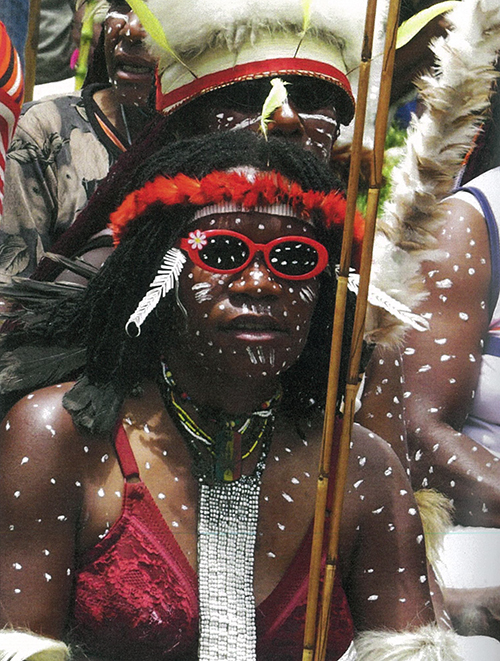
Wenda and Filip Karma, at the time imprisoned by the Indonesian authorities for 15 years for “raising the Morning Star flag”, were nominated for the 2013 Nobel Peace Prize.
Bang founded the Danish section of the Free West Papua Campaign and launched an activist Facebook page.
One of the book’s amusing and inspirational highlights is his secret “freedom paddle” on the Baliem River when Peter Bang used a yellow inflatable rubber boat and a pocket-sized Morning Star flag to make his own personal protest against Indonesia (p. 123). This was a courageous statement in itself given the continued arrests of journalists in West Papua by the military authorities in spite of the “open” policy of President Joko Widodo.
As a special section, Bang’s book devotes 26 pages to the indigenous people of West Papua, profiling some of the territory’s 300 tribes and their cultural and social systems, such as the Highlands communities of Dani and Yali, and the Asmat, Korowai and Kombai peoples.
Fascinating insight
This book is a fascinating insight into West Papuan life under duress, but would have benefitted with tighter and cleaner copy editing by the English-language volunteer editors. Nevertheless, it is a valuable work with a strong sociopolitical message.
Peter Bang concludes: “Nobody knows what the future holds. In 2018, the Indonesian regime continues the brutal crackdown on the native population of West Papua.”
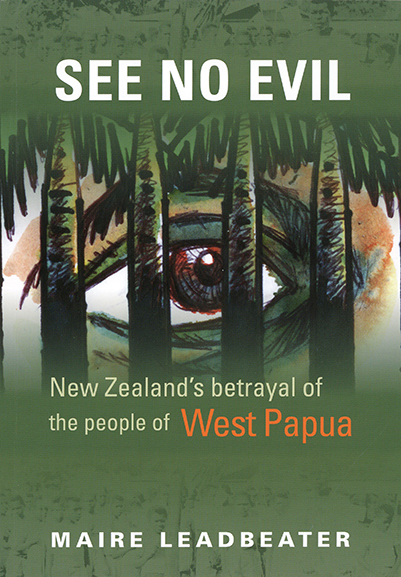 In contrast to Bang’s authentic narrative of life in West Papua, Maire Leadbeater’s See No Evil book – launched yesterday – is an activist historical account of New Zealand’s shameful record over West Papua, which is just as disgraceful as Wellington’s record on Timor-Leste over 24 years of Indonesian illegal occupation (tempered by a quietly supportive post-independence role).
In contrast to Bang’s authentic narrative of life in West Papua, Maire Leadbeater’s See No Evil book – launched yesterday – is an activist historical account of New Zealand’s shameful record over West Papua, which is just as disgraceful as Wellington’s record on Timor-Leste over 24 years of Indonesian illegal occupation (tempered by a quietly supportive post-independence role).
Surely there is a lesson here. For those New Zealand politicians, officials and conservative journalists who prefer to meekly accept the Indonesian status quo, the East Timor precedent is an indicator that we should be strongly advocating self-determination for the Papuans.
One of the many strengths of Leadbeater’s thoroughly researched book is she exposes the volte-face and hypocrisy of the stance of successive New Zealand governments since Walter Nash and his “united New Guinea” initiative (p. 66).
“A stroke of the pen in the shape of the 1962 New York Agreement, signed by the colonial Dutch and the Indonesian government, sealed the fate of the people of West Papua,” the author notes in her introduction. Prior to this “selling out” of a people arrangement, New Zealand had been a vocal supporter of the Dutch government’s preparations to decolonise the territory.
In fact, the Dutch had done much more to prepare West Papua for independence than Australia had done at that stage for neighbouring Papua New Guinea, which became independent in 1975.
Game changer
Indonesia’s so-called September 30th Movement crisis in 1965 – three years after paratroopers had been dropped on West Papua in a farcical “invasion” – was the game changer. The attempted coup triggered massive anti-communist massacres in Indonesia leading to an estimated 200,000 to 800,000 killings and eventually the seizure of power by General Suharto from the ageing nationalist President Sukarno in 1967 (Adam, 2015).

As Leadbeater notes, the bloodletting opened the door to Western foreign investment and “rich prizes” in West Papua such as the Freeport’s Grasberg gold and copper mine, one of the world’s richest.
“New Zealand politicians and diplomats welcomed Indonesia’s change in direction. Cold War anti-communist fervour trumped sympathy for the victims of the purge; and New Zealand was keen to increase its trade, investment and ties with the ‘new’ Indonesia.” (p. 22)
The first 13 chapters of the book, from “the Pleistocene period” to “Suharto goes but thwarted hope for West Papua”, are a methodical and insightful documentation of “recolonisation”, and New Zealand’s changing relationship are an excellent record and useful tool for the advocates of West Papuan independence.
However, the last two contemporary chapters and conclusion, do not quite measure up to the quality of the rest of the book.
For example, a less than two-page section on “Media access” gives short change to the important media role in the West Papuan independence struggle. Leadbeater quite rightly castigates the mainstream New Zealand media for a lack of coverage for such a serious issue. Her explanation for the widespread ignorance about West Papua is simplistic:
“A major reason (setting aside Radio New Zealand’s consistent reporting) is that the issues are seldom covered in the mainstream media. It is a circular problem: lack of direct access results in a dearth of objective and fully rounded reporting; editors fear that material they do receive may be inaccurate or misrepresentative; so a media blackout prevails and editors conflate the resulting limited public debate with a lack of interest.” (p. 233)
Mainstream ‘silence’
Leadbeater points out that the mainstream media coverage of the “pre-internet 1960s did a better job”. Yet she fails to explain why, or credit those contemporary New Zealand journalists who have worked hard to break the mainstream “silence” (Robie, 2017).
She dismisses the courageous and successful groundbreaking attempts by at least two New Zealand media organisations – Māori Television and Radio New Zealand – to “test” President Widodo’s new policy in 2015 by sending crews to West Papua in merely three sentences. Since then, she admits, Indonesia’s media “shutters have mostly stayed shut” (p. 235).
One of the New Zealand journalists who has written extensively on West Papua and Melanesian issues for many years, RNZ Pacific’s Johnny Blades, is barely mentioned (apart from the RNZ visit to West Papua). Tabloid Jubi editor Victor Mambor, who visited New Zealand in 2014, Paul Bensemann (who travelled to West Papua disguised as a bird watcher in 2013), Scoop’s Gordon Campbell, Television New Zealand’s Pacific correspondent Barbara Dreaver and Tere Harrison’s 2016 short documentary Run It Straight are just a few of those who have contributed to growing awareness of Papuan issues in this country who have not been given fair acknowledgement.
Also important has been the role of the alternative and independent New Zealand and Pacific media, such as Asia Pacific Report, Pacific Scoop (both via the Pacific Media Centre), West Papua Media and Evening Report that have provided relentless coverage of West Papua. Other community and activist groups deserve honourable mentions.
Even in my own case, a journalist and educator who has written on West Papuan affairs for more than three decades with countless articles and who wrote the first New Zealand book with an extensive section on the West Papuan struggle (Robie, 1989), there is a remarkable silence.
One has a strong impression that Leadbeater is reluctant to acknowledge her contemporaries (a characteristic of her previous books too) and thus the selective sourcing weakens her work as it relates to the millennial years.
The early history of the West Papuan agony is exemplary, but in view of the flawed final two chapters I look forward to another more nuanced account of the contemporary struggle. Merdeka!
David Robie is director of the Pacific Media Centre and editor of Pacific Journalism Review. He was awarded the 1983 NZ Media Peace Prize for his coverage of Timor-Leste and West Papua, “Blood on our hands”, published in New Outlook magazine.
Papua Blood: A Photographer’s Eyewitness Account of West Papua Over 30 Years, by Peter Bang. Copenhagen, Denmark: Remote Frontlines, 2018. 248 pages. ISBN 9788743001010.
See No Evil: New Zealand’s Betrayal of the People of West Papua, by Maire Leadbeater. Dunedin, NZ: Otago University Press, 2018. 310 pages. ISBN 9781988531212.
References
Adam, A. W. (2015, October 1). How Indonesia’s 1965-1966 anti-communist purge remade a nation and the world. The Conversation. Retrieved from https://theconversation.com/how-indonesias-1965-1966-anti-communist-purge-remade-a-nation-and-the-world-48243
Bang, P. (1996). Duianya Puwul. [English edition (2018): Puwul’s World: Endangered native people]. Copenhagen, Denmark: Remote Frontlines.
Osborne, R. (1985). Indonesia’s secret war: The guerilla struggle in Irian Jaya. Sydney, NSW: Allen & Unwin.
Robie, D. (1989). Blood on their banner: Nationalist struggles in the South Pacific. London, UK: Zed Books.
Robie, D. (2017). Tanah Papua, Asia-Pacific news blind spots and citizen media: From the ‘Act of Free Choice’ betrayal to a social media revolution. Pacific Journalism Review : Te Koakoa, 23(2), 159-178. https://doi.org/10.24135/pjr.v23i2.334



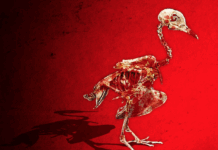

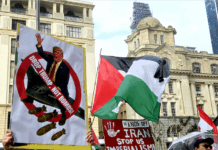
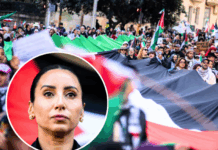





























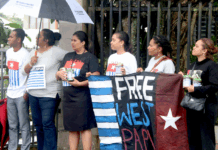









[…] REVIEW: David Robie also blogs at Café […]
Comments are closed.